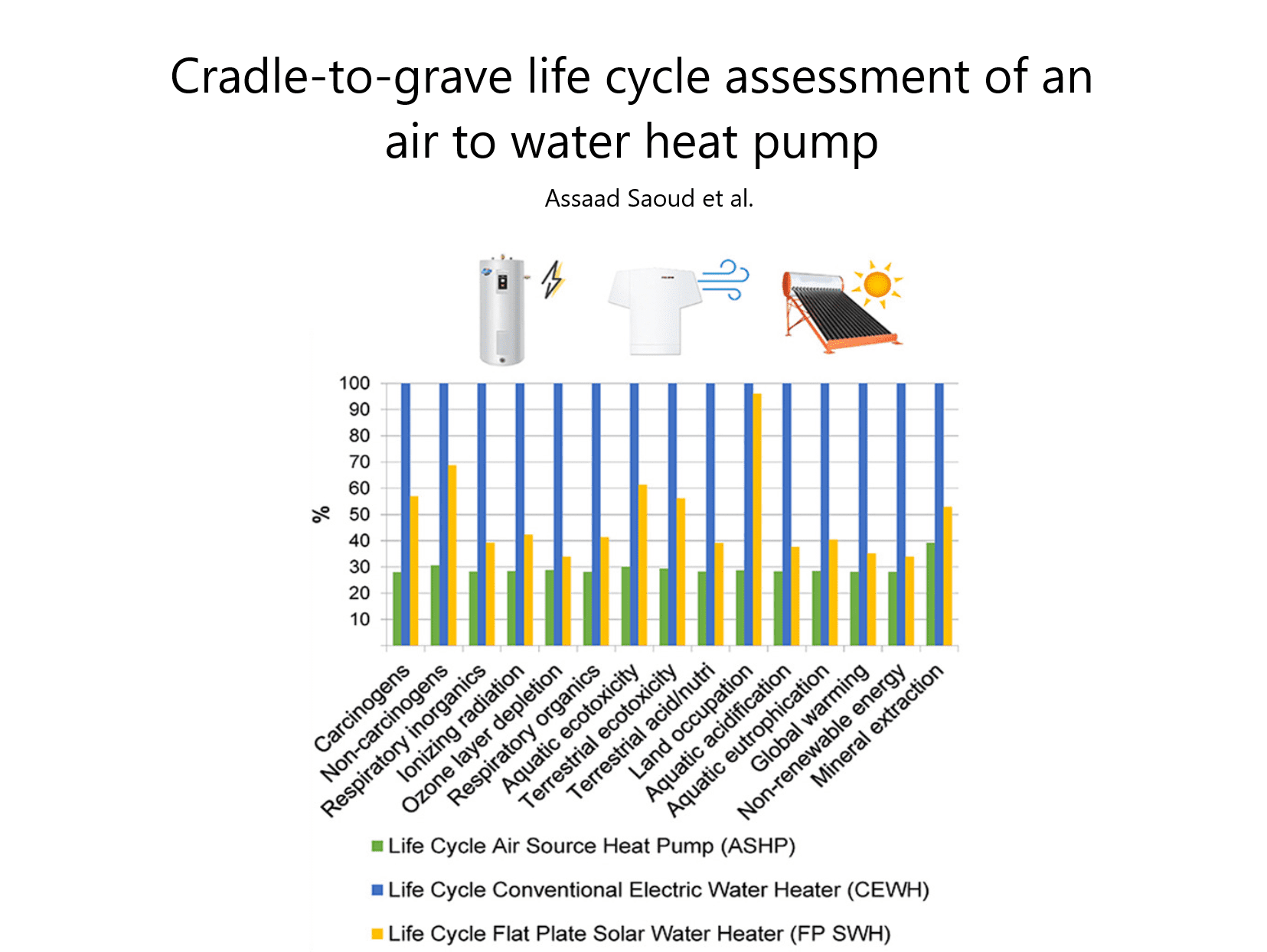Cradle-to-grave life cycle assessment of an air to water heat pump

Cradle-to-grave life cycle assessment of an air to water heat pump: Case study for the Lebanese context and comparison with solar and conventional electric water heaters for residential application
Heat pumps (HPs) are one of the most energy efficient space and water heating technologies. Despite the technology being well established, worldwide public recognition is yet to be reached. The ASHP technology is picking up in the Lebanese market. This is driven by the need to reduce electricity consumption by Lebanese households on the one hand, and on the inability to install solar hot water systems in high story buildings in urban areas, where roof space is limited and competition for this space is high. In addition, the ASHP technology for Lebanon is now being promoted officially by the Lebanese Ministry of Energy and Water, in collaboration with the Italian Ministry for the Environment, Land, and Sea (IMELS).
This study investigates the environmental performance of the air source heat pump (ASHP) technology. The life cycle assessment (LCA) methodology is used. An LCA analysis provides a clear understanding of the environmental impacts of a product throughout its life cycle. This paper aims to i) determine and analyze the environmental impacts of the ASHP and ii) compare the impacts of the ASHP with those associated with a flat plate (FP) solar water heater (SWH) and a conventional electric water heater (CEWH). The functional unit is “heating 416,100 L of water to 60 °C”. The software used is SimaPro and the impact assessment method is IMPACT 2002+. Results show that the copper pipes of the ASHP are the highest contributors to 6 out of 15 impact categories for the assembly. Moreover, the refrigerant inside the pump is the highest contributor to ozone layer depletion (90.25%). The life cycle results of the three systems show a large contribution of the use phase to the total life cycle impacts. This leads to a need for improving the refrigerant, the Lebanese electricity grid and if possible changing the material of the heat pump pipes. The comparative LCA proves that the ASHP is the best alternative due to its low power requirement during the use phase: Lebanese households could save 1668.45 kg CO2 eq and 16983.25 kg CO2 eq by installing an ASHP instead of the solar water heater and the electric water heater, respectively. This work encourages installations of this better alternative across Lebanon’s residential sector and in the world in order to mitigate the harm to the environment and further improve the use of renewable energy.
Refer to the complete document in the next link:
https://www.sciencedirect.com/science/article/abs/pii/S2352710221011116
